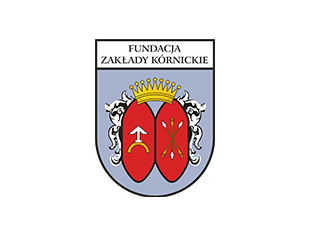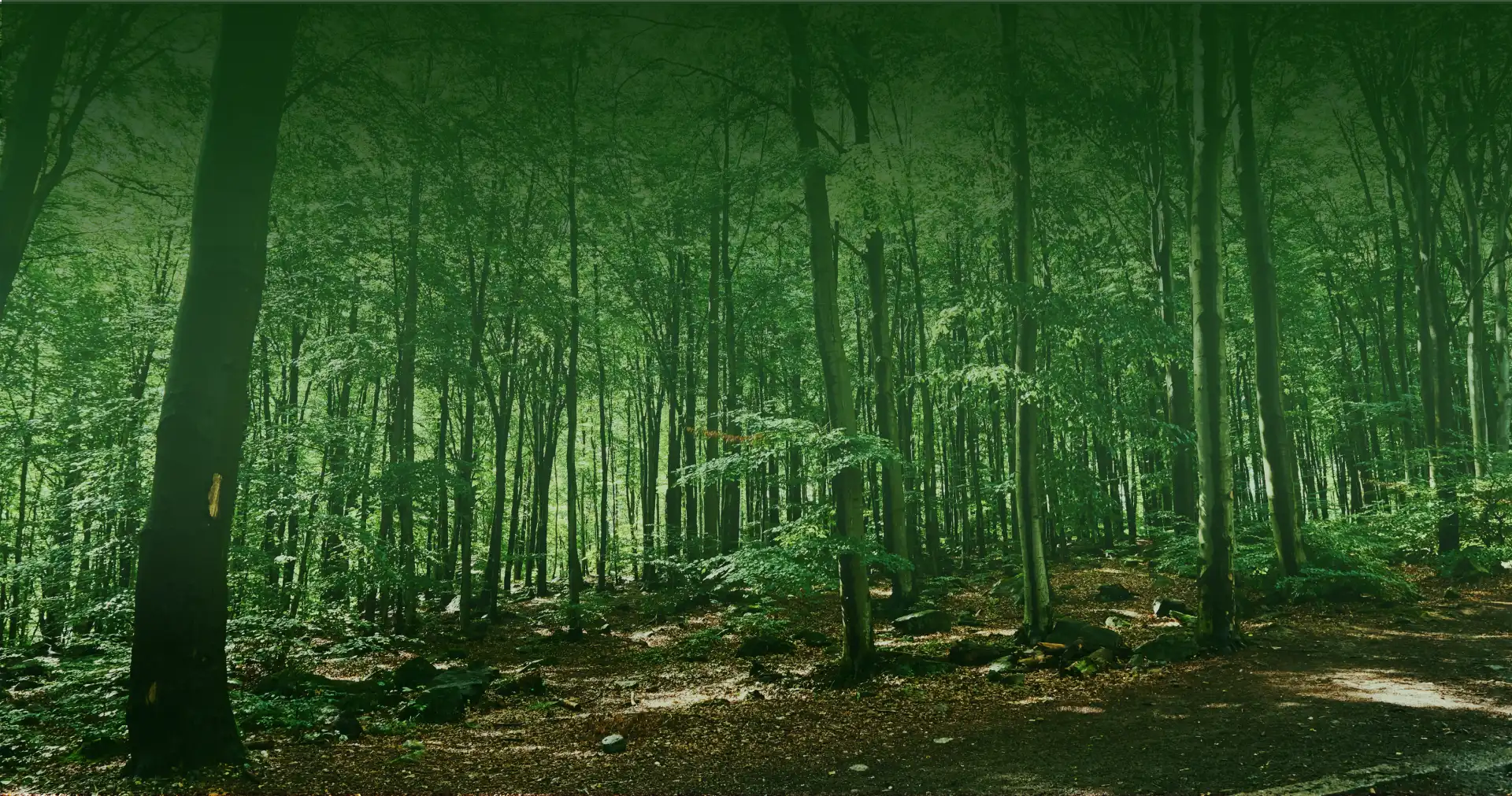Research focus:
The main areas of my research include biogeography, population genetics, phylogenesis, ethnobotany, and demography of woody species, with particular attention to endemic and relic taxons.
My current focus is on studying flora that can be found in biodiversity hotspots (the Mediterranean Sea basin, Caucasus, the Irano-Anatolian region) and within European mountain ranges (the Alps, the Carpathian Mountains, and the Pyrenees).
I analyse spatial data concerning the incidence of specific species and their reaction to environmental factors, which allows me to determine the spatial patterns for plant incidence. The collected information on genetic resources, potential distribution and interactions with the environment facilitate the planning of strategies for the protection of individual species and entire ecosystems.
My research activities also include cooperation with experts specialising in such scientific disciplines as biological sciences, forestry,
and medical sciences.
Keywords:
Biogeography, population genetics, relic species, distribution modelling, biodiversity protection
Publications
- Iszkuło G., Tyrala-Wierucka Z., Thomas P.A., Terlecka M., Walas Ł., Tomaszewski D. 2024. Should the relationship between leaf margin and temperature be re-defined for areas with colder climates? Journal of Biogeography 51: 1842–1851. https://doi.org/10.1111/jbi.14855
- Iszkuło G., Tyrała-Wierucka Ż., Terlecka M., Walas Ł., Tomaszewski D. 2024. What’s the point of toothed leaves? In: Tomaszewski D., Jagodziński A.M. (eds.). Research and Practice in Forest Ecology. International Scientific Conference for Young Scientists. Kórnik, 8-12 May 2024. Book of abstracts. Bogucki Wydawnictwo Naukowe, Poznań. Pp. 101-105.
- Sękiewicz K., Salva-Catarineu M., Walas Ł., Romo A., Gholizadeh H., Naqinezhad A., Farzaliyev V., Mazur M., Boratyński A. 2024. Consequence of habitat specificity: a rising risk of habitat loss for endemic and sub-endemic woody species under climate change in the Hyrcanian ecoregion. Regional Environmental Change 24(2): 68. https://link.springer.com/article/10.1007/s10113-024-02222-7
- Tylutka A., Morawin B., Walas Ł., Zembron-Lacny A. 2024. Does excess body weight accelerate immune aging? Experimental Gerontology 187: 112377. https://doi.org/10.1016/j.exger.2024.112377
- Tylutka A., Walas Ł., Zembron-Lacny A. 2024. Level of IL-6, TNF, and IL-1β and age-related diseases: a systematic review and meta-analysis. Frontiers in Immunology 15: 1330386. https://doi.org/10.3389/fimmu.2024.1330386
- Tylutka A., Żabiński P., Walas Ł., Zembron-Lacny A. 2024. Neuroinflammation as a link in Parkinson's and Alzheimer's Diseases: A systematic review and metaAnalysis. Aging and Disease (early access). http://dx.doi.org/10.14336/AD.2024.1174
- Waheed M., Walas Ł., Alipour S., Arshad F., Jameel M.A., Siddiqui M.H., Alamri S., Haq S.M., Bussmann R.W. 2024. Global climate change increases the risk of invasion and the expansion of paper mulberry in the subtropical region. Global Ecology and Conservation 54: e03088. https://doi.org/10.1016/j.gecco.2024.e03088
- Walas Ł., Alipour S., Haq S.M., Alamri S. 2024. The potential range of west Asian apple species Malus orientalis Uglitzk. under climate change. BMC Plant Biology 24(1): 381. https://bmcplantbiol.biomedcentral.com/articles/10.1186/s12870-024-05081-w
- Walas Ł., Tung D.Q., Sękiewicz K., Pietras M., Bravo F., Kozlowski G., Van Sâm H. 2024. Risk assessment of habitat suitability decline for the endangered riparian tree Pterocarya tonkinensis (Juglandaceae): conservation implications. European Journal of Forest Research 143(4): 1057-1068. https://link.springer.com/article/10.1007/s10342-024-01679-9
- Yousefzadeh H., Walas Ł., Amirchakhmaghi N., Alipour S., Pouramin M., Song Y-G., Kozlowski G. 2024. Potential effects of climate change on future distribution of an endangered tree species, Acer mazandaranicum, in the Hyrcanian forest. Forest Ecology and Management 555: 121654. https://doi.org/10.1016/j.foreco.2023.121654
- Alipour S., Walas Ł. 2023. The influence of climate and population density on Buxus hyrcana potential distribution and habitat connectivity. Journal of Plant Research 136(4): 501-514. https://link.springer.com/article/10.1007/s10265-023-01457-5
- Beridze B., Sękiewicz K., Walas Ł., Danelia I., Farzaliyev V., Kvartskhava G., Szmyt J., Dering M. 2023. Niche modelling suggests low feasibility of assisted gene flow for a Neogene relict tree, Castanea sativa Mill. Dendrobiology 90: 58-75. https://doi.org/10.12657/denbio.090.005
- Beridze B., Sękiewicz K., Walas Ł., Thomas P.A., Danelia I., Farzaliyev V., Kvartskhava G., Sós J., Dering M. 2023. Biodiversity protection against anthropogenic climate change: Conservation prioritization of Castanea sativa in the South Caucasus based on genetic and ecological metrics. Ecology and Evolution 13(5): e10068.https://doi.org/10.1002/ece3.10068
- Beridze B., Sękiewicz K., Walas Ł., Thomas P.A., Danelia I., Kvartskhava G., Farzaliyev V., Bruch A.A., Dering M. 2023. Evolutionary history of Castanea sativa in the Caucasus driven by Middle and Late Pleistocene paleoenvironmental changes. AoB Plants 15(5): plad059. https://doi.org/10.1093/aobpla/plad059
- Hematzadeh A., Esmailzadeh O., Jalali S.G. Mirjalili M.H., Walas Ł., Yousefzadeh H. 2023. Genetic diversity and structure of English yew (Taxus baccata L.) as a tertiary relict and endangered tree in the Hyrcanian forests. Biodiversity and Conservation 32(5): 1733–1753. https://doi.org/10.1007/s10531-023-02573-3
- Tasenkevich L., Boratyński A., Skrypec K., Seniv M., Khmil T., Walas Ł. 2023. Biodiversity of high-mountain woody plants in the East Carpathians in Ukraine. Dendrobiology 89: 1-19. https://doi.org/10.12657/denbio.089.001
- Tylutka A., Morawin B., Walas Ł., Michałek M., Gwara A., Zembron-Lacny A. 2023. Assessment of metabolic syndrome predictors in relation to inflammation and visceral fat tissue in older adults. Scientific Reports 13(1): 89. https://www.nature.com/articles/s41598-022-27269-6
- Walas Ł., Pietras M., Mazur M., Romo Á., Tasenkevich L., Didukh Y., Boratyński A. 2023. The perspective of Arctic-Alpine species in southernmost localities: Kalmia procumbens example in the Pyrenees and Carpathians. Plants 12(19): 3399. https://doi.org/10.3390/plants12193399.
- Alipour S., Badehian Z., Yousefzadeh H., Asadi F., Espahbodi K., Walas Ł. 2022. Predicting past, current and future suitable habitat for endemic Hyrcanian species Populus caspica Bornm. New Forests. https://link.springer.com/article/10.1007/s11056-022-09918-w
- Sękiewicz K., Danelia I., Farzaliyev V., Gholizadeh H., Iszkuło G., Naqinezhad A., Ramezani E., Thomas P.A., Tomaszewski D., Walas Ł., Dering M. 2022. Past climatic refugia and landscape resistance explain spatial genetic structure in Oriental beech in the South Caucasus. Ecology and Evolution 12(9): e9320. https://doi.org/10.1002/ece3.9320
- Walas Ł., Taib A. 2022. Environmental regionalization and endemic plant distribution in the Maghreb. Environmental Monitoring and Assessment 194: 100. https://link.springer.com/article/10.1007/s10661-021-09707-6
- Walas Ł., Kędziora W., Ksepko M., Rabska M., Tomaszewski D., Thomas P.A., Wójcik R., Iszkuło G. 2022. The future of Viscum album L. in Europe will be shaped by temperature and host availability. Scientific Reports 12(1): 17072. https://www.nature.com/articles/s41598-022-21532-6
- Yousefzadeh H., Amirchakhmaghi N., Naseri B., Shafizadeh F., Kozlowski G., Walas Ł. 2022. The impact of climate change on the future geographical distribution range of the endemic relict tree Gleditsia capsica (Fabaceae) in Hyrcanian forests. Ecological Informatics 71(2022) 101773.https://doi.org/10.1016/j.ecoinf.2022.101773.
- Beridze B., Walas Ł., Iszkuło, G., Jasińska A. K., Kosiński P., Sękiewicz K., Tomaszewski D., Dering M. 2021. Demographic history and range modelling of the East Mediterranean Abies cilicica. Plant and Fungal Systematics, 66(2), 122-132.
- Dering M., Baranowska M., Beridze B. Chybicki I.J., Danelia I., Iszkuło G., Kvartskhava G., Kosiński P., Rączka G., Thomas P.A., Tomaszewski D., Walas Ł., Sękiewicz K. 2021.The evolutionary heritage and ecological uniqueness of Scots pine in the Caucasus ecoregion is at risk of climate changes. Scientific Reports 11, 22845. https://doi.org/10.1038/s41598-021-02098-1
- Song Y-G., Walas Ł., Pietras M., Sâm H.V., Yousefzadeh H., Ok T., Farzaliyev V., Worobiec G., Worobiec E., Stachowicz-Rybka R., Kozlowski G., Boratyński A., Boratyńska K., Jasińska A.K. 2021. Past, present and future suitable areas for the relict tree Pterocarya fraxinifolia (Juglandaceae): integrating fossil records, niche modelling, and phylogeography for conservation. European Journal of Forest Research. https://doi.org/10.1007/s10342-021-01397-6
- Walas Ł., Iszkuło G., Barina Z., Dering M. 2021. Development of microsatellite markers for horse-chestnut (Aesculus hippocastanum), their polymorphism in natural Greek populations, and cross-amplification in related species. Dendrobiology 85: 105-116. https://doi.org/10.12657/denbio.085.010
- Yousefzadeh H., Raeisi S., Esmailzadeh O., Jalali G., Nasiri M., Walas Ł., Kozlowski G. 2021. Genetic Diversity and Structure of Rear Edge Populations of Sorbus aucuparia (Rosaceae) in the Hyrcanian Forest. Plants 10: 1471. https://doi.org/10.3390/plants10071471
- Sękiewicz K., Walas Ł., Beridze B., Fennane M., Dering M. 2020. High genetic diversity and low future habitat suitability: will Cupressus atlantica, endemic to the High Atlas, survive under climate change? Regional Environmental Change 20: #132. https://doi.org/10.1007/s10113-020-01711-9
- Taib A., Morsli A., Chojnacka A., Walas Ł., Sękiewicz K., Boratyński A., Romo À., Dering M. 2020. Patterns of genetic diversity in North Africa: Moroccan-Algerian genetic split in Juniperus thurifera subsp. africana. Scientific Reports 10: 1-17. https://doi.org/10.1038/s41598-020-61525-x
- Kosiński P., Sękiewicz K., Walas Ł., Boratyński A., Dering M. 2019. Spatial genetic structure of the endemic alpine plant Salix serpillifolia: genetic swamping on nunataks due to secondary colonization? Alpine Botany 129: 107-121. https://doi.org/10.1007/s00035-019-00224-4
- Walas Ł., Ganatsas P., Iszkuło G., Thomas P.A., Dering M. 2019. Spatial genetic structure and diversity of natural populations of Aesculus hippocastanum L. in Greece. PLOS ONE 14: #e0226225. https://doi.org/10.1371/journal.pone.0226225
- Walas Ł., Sobierajska K., Ok T., Dönmez A.A., Kanoğlu S.S., Dagher-Kharrat M.B., Douaihy B., Romo A., Stephan J., Jasińska A.K., Boratyński A. 2019. Past, present, and future geographic range of an oro-Mediterranean Tertiary relict: The Juniperus drupacea case study. Regional Environmental Change 19: 1507-1520. https://doi.org/10.1007/s10113-019-01489-5
- Kýpeťová M., Walas Ł., Jaloviar P., Iszkuło G. 2018. Influence of herbivory pressure on the growth rate and needle morphology of Taxus baccata juveniles. Dendrobiology 79: 10-19 http://dx.doi.org/10.12657/denbio.079.002.
- Walas Ł., Dering M., Ganatsas P., Pietras M., Pers-Kamczyc E., Iszkuło G. 2018. The present status and potential distribution of relict populations of Aesculus hippocastanum L. in Greece and the diverse infestation by Cameraria ohridella Deschka & Dimić. Plant Biosystems 152: 1048-1058. https://doi.org/10.1080/11263504.2017.1415991
- Walas Ł., Mandryk W., Thomas P.A., Tyrała-Wierucka Ż., Iszkuło G. 2018. Sexual systems in gymnosperms: A review. Basic and Applied Ecology 31: 1-9. https://doi.org/10.1016/j.baae.2018.05.009
- Yousefzadeh H., Rajaei R., Jasińska A., Walas Ł., Fragnière Y., Kozlowski G. 2018. Genetic diversity and differentiation of the riparian relict tree Pterocarya fraxinifolia (Juglandaceae) along altitudinal gradients in the Hyrcanian forest (Iran). Silva Fennica 52: #10000. https://doi.org/10.14214/sf.10000
- Romo A., Iszkuło G., Seghir Taleb M., Walas Ł., Boratyński A. 2017. Taxus baccata in Morocco: a tree in regression in its southern extreme. Dendrobiology 78: 63-74. http://dx.doi.org/10.12657/denbio.078.007
- Iszkuło G., Pers-Kamczyc E., Nalepka D., Rabska M., Walas Ł., Dering M. 2016. Postglacial migration dynamics helps to explain current scattered distribution of Taxus baccata. Dendrobiology 76: 81-89. http://dx.doi.org/10.12657/denbio.076.008
Projects
Projects for the years 2025-2022
- Utilization of specific microsatellite markers to study the Mating System of Common Horse Chestnut (Aesculus hippocastanum). (Original title: Wykorzystanie specyficznych markerów mikrosatelitarnych do badania systemu kojarzenia kasztanowca zwyczajnego Aesculus hippocastanum L.). Project funded by the Internal Research Fund of the Institute of Dendrology, Polish Academy of Sciences (FBW_2, DEC-2022/02/ZB/FBW/00004). Project duration: 2022. Principal Investigator: Walas Ł.
- Genetic diversity and differentation of natural populations of horse chestnut, Aesculus hippocastanum. (Original title: Zmienność i zróżnicowanie genetyczne naturalnych stanowisk kasztanowca zwyczajnego, Aesculus hippocastanum). Project funded by the National Science Centre (PRELUDIUM, 2017/27/N/NZ8/02781). Project duration: 2018–2021. Principal Investigator: Walas Ł.
Popular Science Articles
[Articles in Polish]
- Walas Ł. 2023. Tajemnice okryte jedwabiem. Kórniczanin 7: 13.
- Walas Ł. 2023. Zagrożona różnorodność. Academia – Magazyn Polskiej Akademii Nauk 1(73): 44-47.
- Walas Ł. 2021. Niezwykła historia zwyczajnego kasztanowca. Kosmos 70 (1):27-34.
Books and Book Chapters
- Iszkuło G., Tyrała-Wierucka Ż., Terlecka M., Walas Ł., Tomaszewski D. 2024. What’s the point of toothed leaves? In: Tomaszewski D., Jagodziński A.M. (eds.). Research and Practice in Forest Ecology. International Scientific Conference for Young Scientists. Kórnik, 8-12 May 2024. Book of abstracts. Bogucki Wydawnictwo Naukowe, Poznań. Pp. 101-105.
















